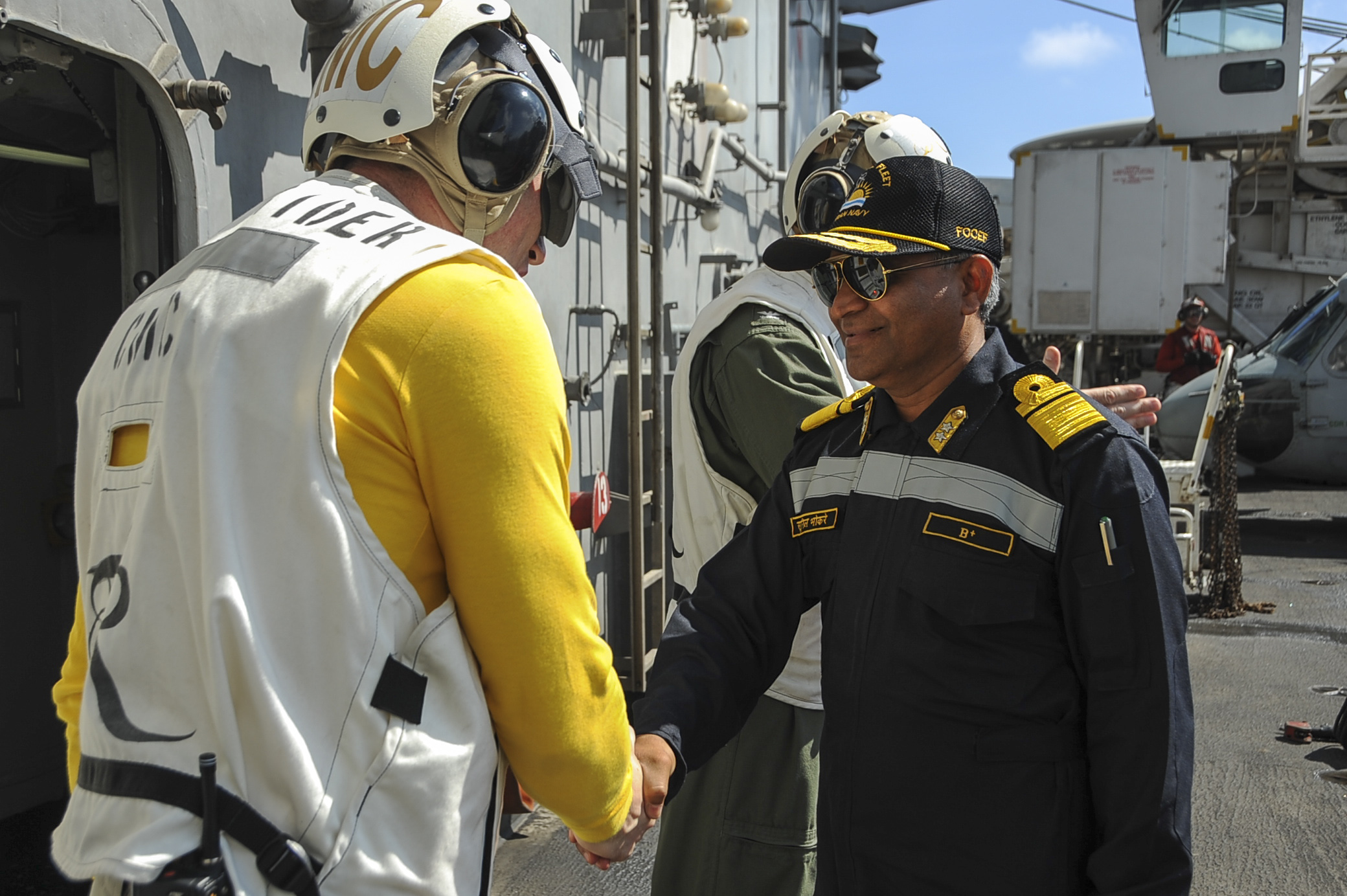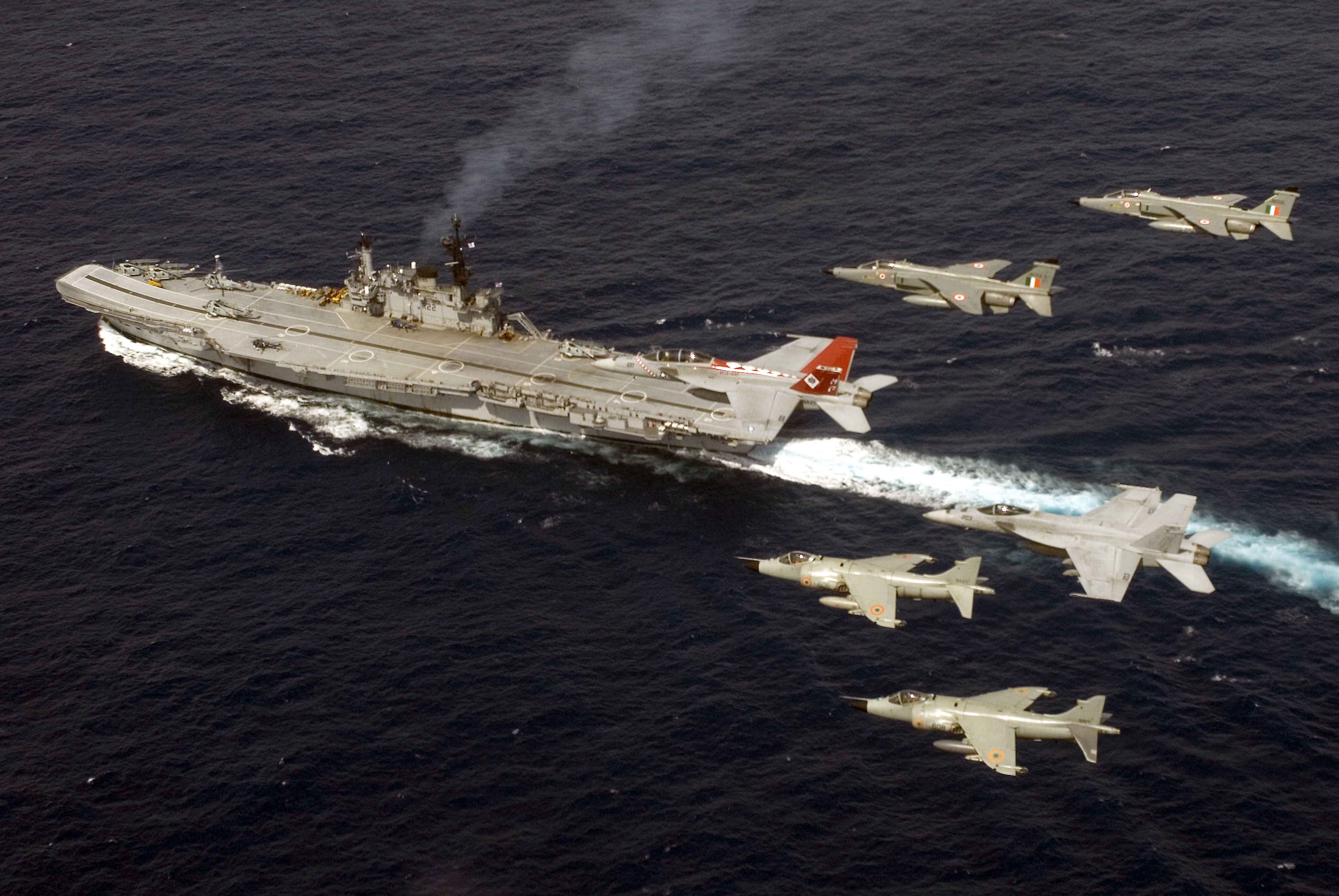
The United States ambassador to India said the two nations increasingly have a common vision of security across the Indo-Pacific region that is translating into “our forces and systems … becoming interoperable” for an array of missions.
Ambassador Richard Verma, speaking Friday at The Brookings Institution, a Washington, D.C., think tank, said this is particularly true in the maritime domain. In the past week, Indian Defense Minister Manohar Parrikar meet with Adm. Harry Harris, Pacific Command commander in Hawaii, and then flew on an MV-22 Osprey with Defense Secretary Ashton Carter to carrier USS Dwight D. Eisenhower (CVN-69) to see first-hand carrier strike group operations as part of their two-day discussion “of deepening security relations.” Carter earlier in the year became the first American Defense secretary to tour an Indian operational command.
Verma added that 2015 marked the beginning of the nations’ Defense trade technology initiative (DTTI) to “further integrate our defense industries” most notably in aviation and aircraft carrier development. In the last year, the ambassador said bilateral defense trade amounted to $14 billion, including a $3 billion contract with Boeing to deliver AH-64 Apache attack helicopters and CH-47 Chinook heavy lift helicopters to India. In turn, India will manufacture some parts for the Apaches.
Looking ahead into early 2016, he cited India’s planned involvement in the next Rim of the Pacific exercise, the United States participation in India’s Fleet review in February and both participating in a regional special operations forces (SOF) exercise in January.
Carter called India “an anchor of global security,” Verma said. As examples of that, the ambassador mentioned its major role in evacuating civilians, including Americans, from Yemen, and relief operations in Nepal following a devastating earthquake in April.
“Both our countries want to see a stable, secure Afghanistan, a democratic Afghanistan,” he said. In working toward that goal jointly, he cited Gen. John Campbell’s recent meetings in Delhi to discuss the way ahead.
Verma said, “Regional tensions are something that [remains] challenging,” particularly between Pakistan and India. For the United States, he said it was critical to “stay lashed up in our policy in both Afghanistan and Pakistan” where the threats from Taliban and others such as the Haqqani network to both governments are high.
But it is equally important, he said, “To make sure it is clear our policy with India stands alone.”
In answer to a question, Verma, said, “We see India as a natural partner” that wants to stand up for the rule of law. “That’s a big deal.”
As to India’s silence on Russia’s annexation of Crimea, “India has a different relationship” with Moscow that reach back into the early Cold War when India declared it was non-aligned between the West and Soviet Union. “We have made our concerns known. We are engaged on the big questions of the day.”

Verma said this regular engagement was a far cry from 1969 during the Vietnam War when Chester Bowles, then the American ambassador to India, lamented that despite the “enormous economic potential” of India he “could not persuade the president or State [Department]” to pay any attention to the subcontinent.
In recent years, “our cooperation became more regular. I would say routine.” The “new normal” includes civil nuclear cooperation, market access, health issues, etc.
“India and the U.S. need each other economically,” he said.
Verma said during the recently concluded climate negotiations in Paris President Barack Obama and Prime Minister Narendra Modi talked regularly on new secure communications lines to find common ground and develop ways to proceed in reaching an agreement.





